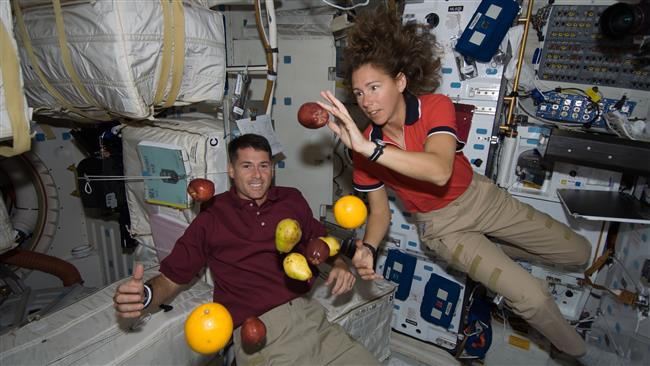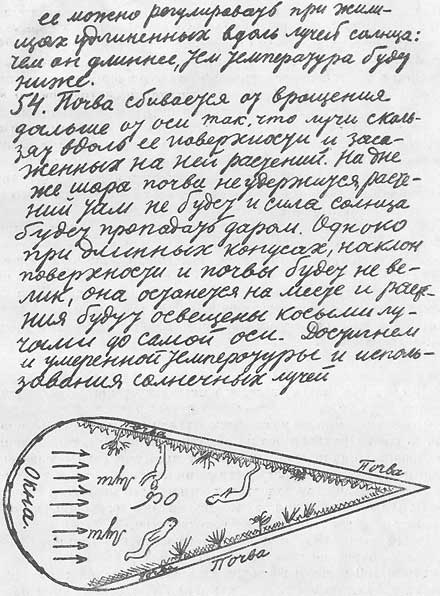Scientists have proposed to produce food for astronauts from human waste
Scientists from the University of Pennsylvania have proposed recycling solid human waste to obtain the nutrient mass of bacteria, which can be a component of a closed life-support system for long flights.

On the existing spacecraft and stations, the life support system is not closed. It implies the need for air and food supplies from the Earth, as well as the return of waste from the station back to the planet. If for long-term expeditions into orbit this is an acceptable approach, then already in the case of the Moon, Mars, and even more so with flights beyond the solar system, which we see in science fiction films, crews will have problems with it. Humankind faces an important task today: the creation of fully autonomous spacecraft in which people can spend an unlimited amount of time without harm to their health. One of the components of such a ship is a closed life support system, independent of deliveries from the Earth. It is necessary to produce products on the ship.
During interplanetary travel, solid human waste can become an important resource for astronauts, and instead of storing or discarding them, scientists from the University of Pennsylvania suggested recycling them with microbes, obtaining nutrients and using them for food directly or for cooking. Professor Christopher House (Christopher House) argues that in the end the product will be similar to the Australian Wegimite dish - pasta, which is prepared from the remains of beer wort and flavorings.
')
In order to put their idea into practice, the researchers took artificial solid and liquid wastes that are commonly used in such tests and placed them in a closed system in the form of a cylinder 1.2 meters long and 10 centimeters in diameter. The invention of scientists inspired the construction of an aquarium filter with chemical water purification - and they used components from such filters to create a system for producing methane.
Microbes selected by scientists destroyed waste. With the help of methane, which is formed during anaerobic rotting, they have grown the bacterium Methylococcus capsulatus . The bacteria Methylococcus capsulatus can be used as animal feed. It contains 52% protein and 36% fat, so it can be a source of nutrients for people.
When recycling human waste, it is important to eliminate all pathogenic microbes. To do this, the team raised the pH of the system to 11 and found the growth of the bacterium Halomonas desiderata - it contains 15% protein and 7% fat. Another way is temperature treatment: when the temperature rises to 70 degrees Celsius, the thermophilic bacterium Thermus aquaticus begins to grow, which lives in regions where there are geysers with temperatures above 55 degrees. The composition of these bacteria - 61% protein and 16% fat. For comparison - in 100 grams of chicken breast 20-25 grams of protein, in a striploin-steak - 23 grams.

Vizhimayt on toasts
Scientists from the University of Pennsylvania for 13 hours of testing turned out to reduce the amount of solid waste by half. “Imagine that someone with our system can process 85% of carbon and nitrogen from waste into protein without using hydroponics and artificial light. This will be a fantastic invention for traveling into far space, ”Christopher House is sure.
Another of the founders of space travel, Konstantin Tsiolkovsky, in his book “Outside the Earth” about space colonists, described how artificial gravity was created and wrote about the need for crop production both in spacecraft and on other planets: “Imagine a long conical surface or funnel, base or wide the hole is covered with a transparent ball surface. It is directly facing the Sun, and the funnel rotates around its long axis (height). On the opaque inner walls of the cone there is a layer of wet soil with plants planted in it. ”

The manuscript of K.E. Tsiolkovsky "Space Travel Album", 1933. A source
In the 1970s, the USSR began to develop a closed system BIOS-3 , which continues to work today. The system is able to provide a crew of two or three people for half a year with water and air by almost 100% and with food - by 50% or more. The objectives of the International Center for Closed Ecological Systems are to study the principles of functioning of such systems of varying degrees of complexity and to develop the scientific foundations for their creation.
In the 2000s, the Institute of Biomedical Problems of the Russian Academy of Sciences conducted a series of experiments as part of the Mars 500 program : volunteers lived up to 520 days in an iron container without alcohol, cigarettes, communication with the outside world, eating only “space” food, growing lettuce and peas in greenhouses.
Already, at the International Space Station, the water regeneration system is partially closed. Robins Carrasquillo, Technical Director of the Environmental Monitoring and Life Support System of the International Space Station (ECLSS), noted the importance of Soviet and Russian developments: “The Russians were ahead of us in this area, and even the Salyut and Mir spacecraft were able to condense moisture from the air and used electrolysis - passing an electric current through the water - to produce oxygen. " Already at the Mir station , which had worked in orbit for 15 years and was flooded in the Pacific Ocean in 2001, the SRV-U urine water recovery system was in operation. Only not all cosmonauts on the ISS agree to drink what used to be urine.

On the existing spacecraft and stations, the life support system is not closed. It implies the need for air and food supplies from the Earth, as well as the return of waste from the station back to the planet. If for long-term expeditions into orbit this is an acceptable approach, then already in the case of the Moon, Mars, and even more so with flights beyond the solar system, which we see in science fiction films, crews will have problems with it. Humankind faces an important task today: the creation of fully autonomous spacecraft in which people can spend an unlimited amount of time without harm to their health. One of the components of such a ship is a closed life support system, independent of deliveries from the Earth. It is necessary to produce products on the ship.
During interplanetary travel, solid human waste can become an important resource for astronauts, and instead of storing or discarding them, scientists from the University of Pennsylvania suggested recycling them with microbes, obtaining nutrients and using them for food directly or for cooking. Professor Christopher House (Christopher House) argues that in the end the product will be similar to the Australian Wegimite dish - pasta, which is prepared from the remains of beer wort and flavorings.
')
In order to put their idea into practice, the researchers took artificial solid and liquid wastes that are commonly used in such tests and placed them in a closed system in the form of a cylinder 1.2 meters long and 10 centimeters in diameter. The invention of scientists inspired the construction of an aquarium filter with chemical water purification - and they used components from such filters to create a system for producing methane.
Microbes selected by scientists destroyed waste. With the help of methane, which is formed during anaerobic rotting, they have grown the bacterium Methylococcus capsulatus . The bacteria Methylococcus capsulatus can be used as animal feed. It contains 52% protein and 36% fat, so it can be a source of nutrients for people.
When recycling human waste, it is important to eliminate all pathogenic microbes. To do this, the team raised the pH of the system to 11 and found the growth of the bacterium Halomonas desiderata - it contains 15% protein and 7% fat. Another way is temperature treatment: when the temperature rises to 70 degrees Celsius, the thermophilic bacterium Thermus aquaticus begins to grow, which lives in regions where there are geysers with temperatures above 55 degrees. The composition of these bacteria - 61% protein and 16% fat. For comparison - in 100 grams of chicken breast 20-25 grams of protein, in a striploin-steak - 23 grams.

Vizhimayt on toasts
Scientists from the University of Pennsylvania for 13 hours of testing turned out to reduce the amount of solid waste by half. “Imagine that someone with our system can process 85% of carbon and nitrogen from waste into protein without using hydroponics and artificial light. This will be a fantastic invention for traveling into far space, ”Christopher House is sure.
Another of the founders of space travel, Konstantin Tsiolkovsky, in his book “Outside the Earth” about space colonists, described how artificial gravity was created and wrote about the need for crop production both in spacecraft and on other planets: “Imagine a long conical surface or funnel, base or wide the hole is covered with a transparent ball surface. It is directly facing the Sun, and the funnel rotates around its long axis (height). On the opaque inner walls of the cone there is a layer of wet soil with plants planted in it. ”

The manuscript of K.E. Tsiolkovsky "Space Travel Album", 1933. A source
In the 1970s, the USSR began to develop a closed system BIOS-3 , which continues to work today. The system is able to provide a crew of two or three people for half a year with water and air by almost 100% and with food - by 50% or more. The objectives of the International Center for Closed Ecological Systems are to study the principles of functioning of such systems of varying degrees of complexity and to develop the scientific foundations for their creation.
In the 2000s, the Institute of Biomedical Problems of the Russian Academy of Sciences conducted a series of experiments as part of the Mars 500 program : volunteers lived up to 520 days in an iron container without alcohol, cigarettes, communication with the outside world, eating only “space” food, growing lettuce and peas in greenhouses.
Already, at the International Space Station, the water regeneration system is partially closed. Robins Carrasquillo, Technical Director of the Environmental Monitoring and Life Support System of the International Space Station (ECLSS), noted the importance of Soviet and Russian developments: “The Russians were ahead of us in this area, and even the Salyut and Mir spacecraft were able to condense moisture from the air and used electrolysis - passing an electric current through the water - to produce oxygen. " Already at the Mir station , which had worked in orbit for 15 years and was flooded in the Pacific Ocean in 2001, the SRV-U urine water recovery system was in operation. Only not all cosmonauts on the ISS agree to drink what used to be urine.
Source: https://habr.com/ru/post/371205/
All Articles